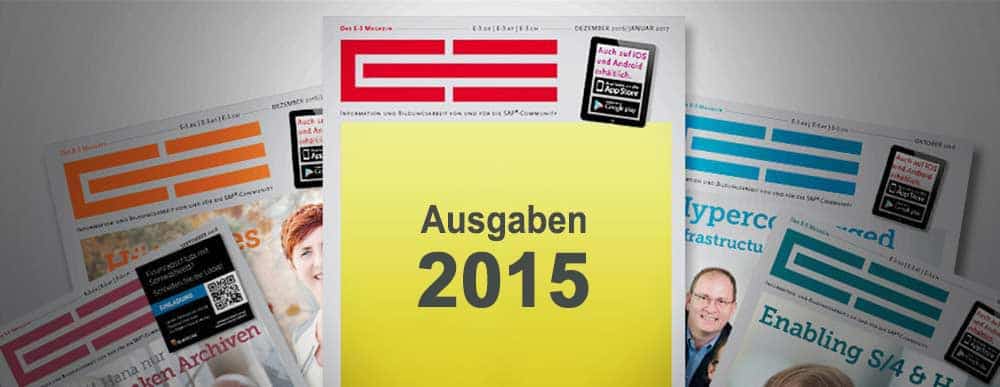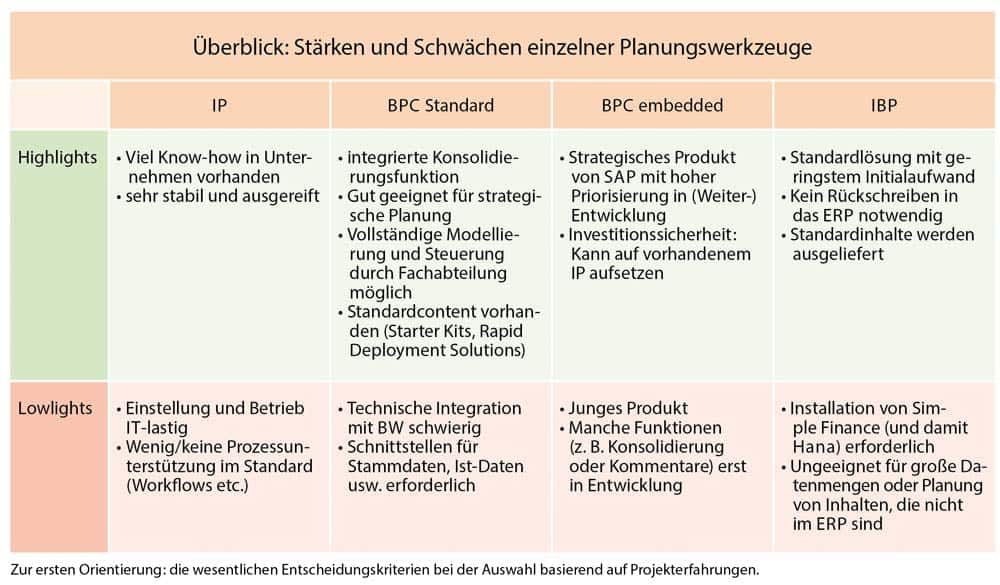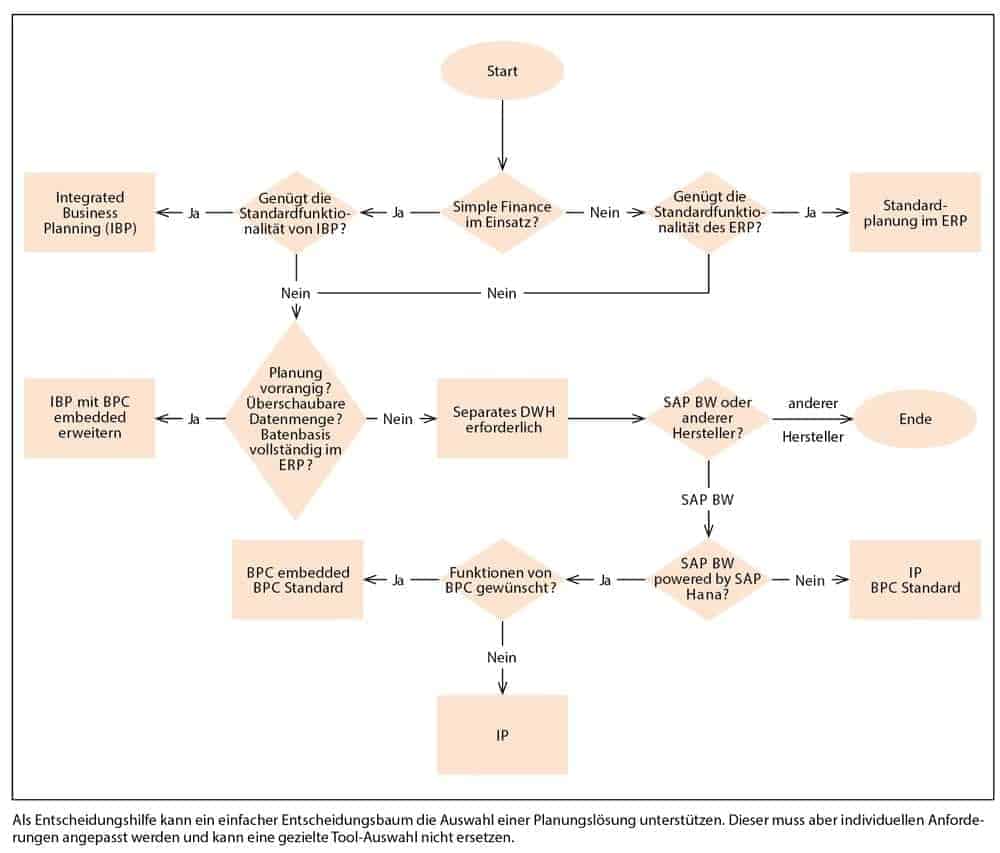The friendly, new face of integrated planning


A tool that optimally supports a company in the planning process must meet many expectations: It should be flexible and easy to use without lengthy training and not hinder the planning process with waiting times such as loading processes, plan calculations or similar.
Existing actual data should be immediately available both as a template for planning and for plan/actual comparisons. A wide range of automated functions support data input, thereby shortening the throughput times of the planning cycles and ensuring the business integration of detailed plans into a planned P&L and balance sheet.
A cash flow simulation and a comparison of the planned values with the company targets are also possible simplifications. Comprehensible plan value entries with documented workflow support round off the requirements profile for a planning application.
The focus of this article is on SAP's planning applications, which allow the planning content and planning process to be customized. The focus is therefore not on the operational plan value entries in ERP, but on the SAP Business Warehouse-based solutions.
Nevertheless, there are surprisingly many connections between the two worlds, if you think of the latest developments in ERP Financials, for example: Integrated Business Planning (IBP) is an add-on for a planning application in ERP.
For initial orientation, the following table summarizes key decision criteria based on project experience.
SAP planning solutions at a glance
Over the past 15 years, SAP has launched a number of planning products on the market:
Business Warehouse Integrated Planning (BW-IP): In 2005, SAP introduced "Integrated Planning" (IP) as a new planning application with BW 7.0. It was the replacement technology for SAP SEM Business Planning and Simulation (BPS), some of which is still used by customers today.
"Integrated planning" in this context means that the planning part can be used without an additional license for BW and that the technical integration with BW has been fully completed.
This technical integration offers the advantage that all content, such as actual or master data, can be used directly for planning. In SAP BW, reporting and planning are therefore closely interlinked.
This offers a fundamental advantage: actual values can be transferred more easily to planning and planned/actual reporting without additional interfaces or loading processes.
Like BPS, IP does not offer any delivered business content and the attempts at process support (workflows etc.) have also been dropped. Contrary to rumors to the contrary, IP is being actively developed further.

Business Planning and Consolidation (BPC Standard) arose from the acquisition of OutlookSoft Corporation by SAP in 2007. Originally based on the Microsoft platform, there is also a version of BPC Standard based on the SAP NetWeaver platform.
Both platforms are still offered in parallel today in version 10.1. The variant for NetWeaver is technically based on SAP BW, but has little in common with BW in terms of functionality.
For example, direct data access between BPC and BW is not possible and master data cannot be used either. The strength of BPC (compared to BW-IP) lies in the fact that essential requirements of specialist departments are already included as standard functionality: predefined planning scenarios (as a "Starter Kit" or "Rapid Deployment Solution"), options for entering comments, process support with workflows and the direct entry of master data for planning.
The very intuitive web interface enables the solution to be used quickly without a great deal of training. The main advantage perceived by the specialist departments is that maintenance is in their hands.
For example, most of the settings, the initialization of planning cycles, the creation of planning scenarios and the design of processes can be made via an intuitive web interface. The so-called EPM Client is used as the front end as an Excel or web add-in.
BPC embedded = BPC Standard + BW-IP
BPC 10.1 embedded differs literally from the standard version only by a name suffix, but technologically it uses the SAP in-memory technology Hana with BW-IP as a basis.
This means that BPC embedded with BW-IP and Hana provides a high-performance technical basis combined with the functionalities and usability of BPC.
For the user, the possibilities for input are extended, as the simple operation of BPC is supported with the advantages of BW-IP input options (e.g. input-ready reports).
Companies that have already invested in integrated planning can adopt their developed solution up to the "top edge" of Query 1:1 with all planning functions - investment security is therefore guaranteed. In the current version 10.1, BPC embedded does not yet include all the functions of the standard version.
Missing functions such as comments and consolidation are already under development and will be delivered in initial versions in the first half of 2015 or at the end of 2015.
Integrated Business Planning (IBP) = SAP Simple Finance + BPC embedded
Recently, SAP also began offering a planning application in SAP ERP on Hana, known as Integrated Business Planning (IBP). Every installation of ERP 6.0 also includes a business warehouse component.
With the installation of Simple Finance Add-on (which in turn requires an "ERP powered by Hana"), a part of the planning application BPC embedded is also installed.
This is supplemented by the standard content supplied for individual planning scenarios such as workbooks including planning functions for planning cost centers, functional areas, internal orders, market segments, P&L and balance sheet, profit centers and projects.
Together with the workflow options of BPC embedded, this results in further and more extensive customization options for the implementation of operational planning directly in the ERP.
Success factors of an implementation project
Transparent selection of the planning tool: As a rule, the selected product will not be able to meet the requirements in all aspects. There is therefore a risk that the success of the project will later be measured against supposedly unfavorable product features that were known at the time of selection. If the decision criteria are transparent, this characteristic cannot later jeopardize success.
Backing from management: Only if the implementation project receives sufficient attention and support from top management can sufficient capacity (personnel, budget) be made available.
The project can only be successful if the necessary technical and organizational changes are coordinated and supported by the management.
Focus on the "big picture": In some cases, there is a risk that too much focus will be placed on the technical implementation if the project is seen as an IT project and the organizational aspects or process changes are seen as too minor.

Departmental interests are also sometimes placed above the interests of a central, standardized planning solution in planning application implementation projects.
In both cases, this drives up costs and project duration without improving the quality of the overall solution. A key success factor is therefore to communicate the overall context to everyone.
Courage to leave gaps (80:20 rule): It often only becomes clear what special cases and exceptions are possible when dealing with the solution in detail. This jeopardizes the success of the project in two ways:
If important business cases are overlooked, the solution is inadequate; if extremely rare and insignificant business cases are also mapped, the effort involved is far too high.
A successful project creates a balance and demands - and receives - the backing of management if business cases that do not have a significant impact on planning quality are not taken into account.
Choice of external consultant: It is important that the above factors are supported by the consultants. A balanced mix of technical and specialist expertise allows external knowledge to be used to suit the respective contacts in the company without placing too much emphasis on technical, specialist and organizational topics.
Test, test, test: Coordinated and intensive testing ensures that the planning tool is well accepted. In addition to the focus on test scope and test organization, the quality of the test data is also crucial.
Ideally, real data from previous planning or adjusted actual data is available and can be tested together with the new processes as part of a dry run. This allows improvements to be made in good time.
Conclusion:
BPC embedded is a product that is used both in standardized planning applications (integrated in ERP) and in individual solutions with BW-IP.
It is based on Hana and is a strategic product for new SAP developments. It supplements existing products with additional functionalities and an interface that meets the needs of specialist departments.
BPC 10.1 embedded is the friendly, new face of integrated planning that many SAP users will see in the future. However, the previous planning tools are still available and, with ERP on Hana/Simple Finance and Integrated Business Planning, there is also a tool that can replace operational planning in ERP.
Issues such as process support, maintenance and usability must therefore also be included in such a decision. As this decision is essential for the success of the entire implementation project, it is advisable to carry out this tool selection as a separate project with experienced consultants.





